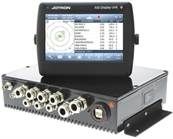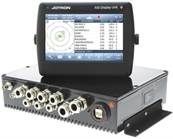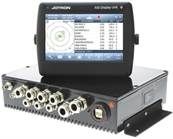AIS Transponders for ships
Do you need a device to send and receive important navigational data while travelling at sea? An automatic identification system (AIS) transponder is your solution. It enables safety and coordination of ship traffic and is an obligatory standard on ships and boats recommended by the International Maritime Organization (IMO). The regulation requires an AIS transponder on all ships of the following sizes:
- international voyages: ships of 300 gross tonnage and upwards
- no international voyages: cargo ships of 500 gross tonnage and upwards
- all passenger ships
In our shop we offer you automatic identification systems (AIS) from premium suppliers like FURUNO to receive data from other vessels in real time. It provides information about your ship’s position, identification, and other significant data of the ship. As a captain, you can exchange data with other captains, coastal authorities and profit from the use of the transponder. Whether you are sailing on a commercial vessel, a yacht or travelling by motorboat – this device is always helpful for your journey at sea.
The regulation from IMO requires an AIS to
- … provide information (ship’s identity, position, course, speed, navigational status and other safety-related information) to suitably equipped shore stations, ships and aeroplanes.
- … automatically receive such data from other fitted ships.
- … monitor and track other ships.
- … exchange information with shore-based stations.
Uses of AIS transponders
AIS transponders work independently of radar wave propagation and optical view and are thus called a cooperative system. Therefore, your ship can be seen even if you are behind a cape or the turn of a river, as long as the signals of the FW-frequency can radiate through. The IMO describes the uses of AIS transponders as follows:
- The collision avoidance of two ships
- As a medium for coastal state to gather data about ships and their charge
- To monitor and minimize illegal fishing
- As tools for state-owned monitoring and steering of traffic by traffic centers like Vessel Traffic Service and others.
All these functions are helpful for communication from ship to ship and other arrangements between captains.
Different types of AIS transponders
There are a few different types of AIS transponders that vary in their transmission power and their usage on ships. Choose the one that is suitable for your ship to fulfil the requirements for safe travels at sea.
Type A and B+
Type A AIS transponders are used on ships for commercial shipping. All vessels over 300 gross tonnage and upwards in international travel and on passenger ships that are subject to the SOLAS-convention. As their transmission power is higher than that of type B AIS transponders, they receive data from ships that are further away. The exact frequency depends on the travelling speed and manoeuvre status of the vessel and reaches from every 2 seconds to 3 minutes.
Type B
Type B AIS transponders are quite similar to Type A transponders but are less expensive due to lower performance requirements. Their transmission power is lower, and thus they are used on ships that do not require AIS transponders as obligatory equipment. The exact frequency depends on the travelling speed and manoeuvre status of the vessel and reaches from every 5 seconds to 3 minutes. You can use it for your boat if you are in the leisure area or fishing industry.
Type B+
The Type B+ transponder bridges the gap between Type A and B transponders. It contains the same technology as the Type A transponder and offers the advantage to transmit even in busy areas. Another advantage is the transmission rate which is in line with the speed of your vessel, thus, other ships see more clearly where you are and where you are headed. On a boat that is equipped with a Type B+ transponder the updates are more frequently compared to Type B with an update rate of 5 seconds in which the ship only travels 60 m between updates.









